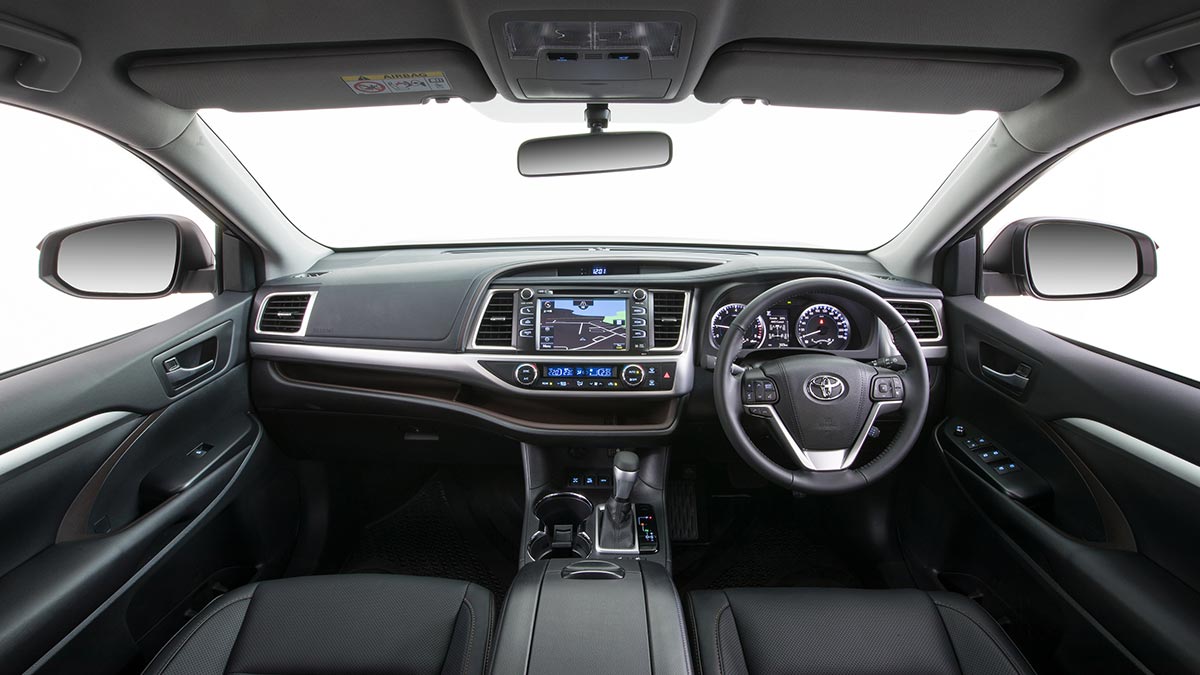Toyota Kluger 2014-2018 used car review

RACV rates the third generation of Toyota’s versatile seven-seat SUV.
The 2014, third-generation Kluger consolidated its place as a true family-focused soft-roader in Toyota’s diverse SUV line-up. It was a major step up from the previous generation, with seven seats as standard, more cabin space and a new six-speed sequential automatic backing its already proven V6 petrol engine.
This medium to large US-built wagon can be found in three family-friendly equipment grades, all with the maximum five-star ANCAP safety rating. In each level there is the choice of front-wheel-drive and all-wheel-drive versions.
The most popular model advertised on the used market is the entry-level GX, with an even split between the mid-spec GXL and top-of-the-range Grande. The majority of GX models are FWD, while AWD become a little more popular as you move up in spec levels. It’s worth noting that all models are equipped with an awkward foot-operated park brake.
Unlike many SUVs that offer a choice of petrol or diesel engines, the Kluger comes equipped only with a petrol engine. It’s a smooth 3.5-litre naturally-aspirated V6 that is shared with other Toyota and Lexus models. It produces a healthy 201kW of power at 6200rpm and 337Nm of torque at a relatively high 4700rpm.
The transmission is automatic only, but a step up from the previous model’s five-speed auto to a six-speed improved both performance and fuel economy. The Kluger accelerates strongly and cruises comfortably, but can still be thirsty at times. Maximum towing capacity is a handy 2000kg, with a maximum ball loading of 200kg.

For many family buyers who never intend to head off-road, the front wheel drive version makes a lot of sense; but it is not always a clear-cut decision. The FWD models have fewer components for a better power-to-weight ratio and reduced driveline drag, resulting in slightly lower fuel use. However, there’s also a reduction in traction. Under hard acceleration on take-off, or driving out of corners, there can be a tendency towards wheel spin and tugging on the steering (known as torque steer) as it struggles at times to get the power to the road smoothly via the front wheels.
The Kluger’s AWD is an on-demand, dynamic torque control system that provides respectable off-road ability; but a greater benefit for most people is that it provides proportionate power to each wheel in everyday driving situations. That equates to extra traction on take-off, when cornering, or if the bitumen gets wet and slippery.
Depending on driving conditions, fuel consumption of around 11.0L/100km is possible, but many owners find the average is closer to 14.0L/100 km. Generally, AWD versions tend to use 0.5 to 1.0 L/100km more than the FWD ones.
In keeping with the everyday family-friendly wagon focus, Kluger’s fully independent coil-sprung suspension was locally tuned for Australian on-road conditions rather than serious off-road use. It’s a comfortable, controlled ride with a competent rather than exciting handling package that does a respectable job for a vehicle of this size and type.
Space-wise, Kluger is a practical seven-seat wagon. The versatile seats slide and fold easily, allowing plenty of passenger/load combinations. It’s roomy enough to seat seven adults in reasonable comfort. The third row is not massive, but better than many other SUV wagons. Handy storage compartments can be found throughout the cabin, and even with the third row occupied there remains enough space in the rear for some luggage.
An upgrade in early 2017 increased the engine output (to 218kW and 350Nm) and introduced an eight-speed automatic; while at the start of 2018 Toyota expanded Kluger’s safety features across the range, adding pre-collision warning, autonomous emergency braking, lane-departure warning, active cruise control and auto high beam to the GX and GXL models.

Known problem areas and severity
The Kluger has an excellent reputation for reliability, providing it has been properly serviced and maintained. Neglecting oil changes, for example, can result in oil sludge and serious engine damage. Make sure the car you are considering has an up-to-date service history.
Look for signs of trim damage, scrapes and scratch marks in paint work down the sides of the vehicle, or evidence of major accident damage and poor-quality repairs. Also check for underbody or suspension damage, particularly on the AWD models, as they may have been used to explore rougher tracks than a family-friendly SUV should be exposed to. The model’s popularity means you can shop around and find a looked-after example at the right price.
A small number of Klugers have been the subject of safety recalls. Some 2014 models were recalled for a fuel leak, and the same year there was an electric power steering assistance issue. In 2017, a few Klugers had a power brake assistance problem. These should have all been rectified by now, but it is still worth a quick check of the recall status with Toyota Australia or a dealer.
The competition
Ford Territory, Hyundai Santa Fe and Kia Sorento.